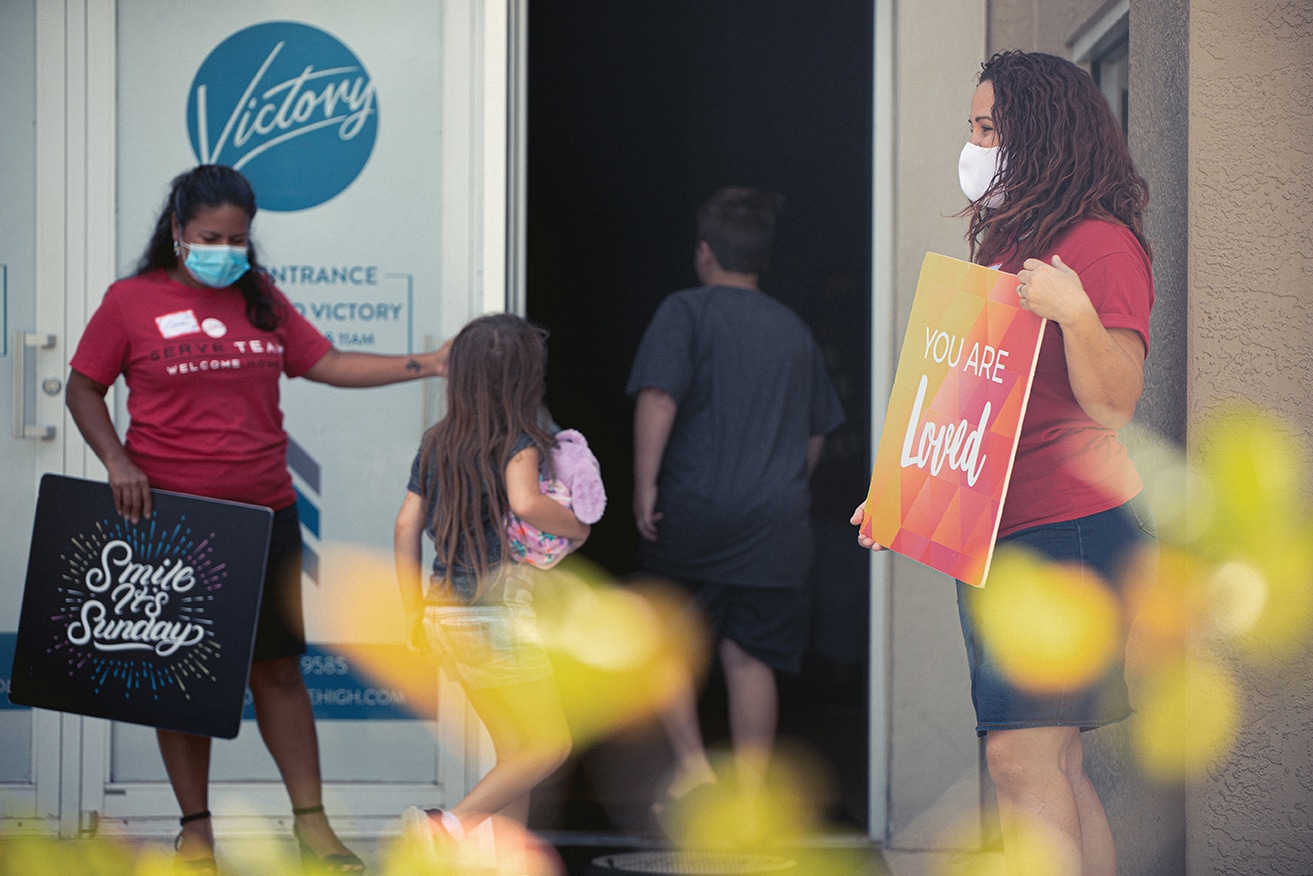By Tim Cool
Though some of us are not entering into a church building yet, I trust many people have “entered His gates” emotionally, spiritually or even virtually. But what about the “re-entering” of the physical gates? It is no surprise COVID-19 has flipped our worlds completely upside down. In some way, shape, or form, people have been impacted drastically by the pandemic.
While our team has consulted various churches during our current season, we have noticed a pattern: inconsistency. The topics, dialogues and questions proposed within the last few months have had more twists and turns than a roller coaster ride.
With contradicting suggestions and “facts,” it is difficult to determine what is up and what is down. Let’s face it…all of the information is all overwhelming. As church leaders, we need to be judicious, wise, and well-prepared in order to stay on top of outdated information, procedures and practices. The good news? You are not in this alone.
These suggestions are not “one size fits all.” For instance, the locality, size, and denomination of your church may impact how you operate during and post COVID-19. However, our hope is to help you and your church navigate the always-changing waters of reopening a building during a pandemic.
Facility Event Guide
Whether you have faced cancellations or have had to pivot toward the virtual realm, it is likely COVID-19 has changed the way events have been held and planned at your church. For all upcoming events, it is important to consider whether the event would be best held virtually or in-person. Or, is it best that you cancel or postpone events already on the calendar?
Overall, having the right event scheduling tools will not only save you time in scheduling your events during this time, but they should also track and store all of the data necessary to abide social distancing and safety procedures recommended by the CDC. Therefore, if your event scheduling software cannot easily do the following, we highly suggest you look into a new program:
- Store links for virtual events
- Allow for event registration
- Accommodate max/min capacity rooms and conflict detection (modified with social distancing)
- Ability to specify special notes per room or resource (breathing problems/allergies, sanitize stations, etc.)
- Ability to notify your attendees of certain accommodations/protocols
Cleaning the Facility
Your facility’s team will have a major role in the safety of your staff and attendees by cleaning and sanitizing your facility properly before and after events. The importance of cleaning, disinfecting, and sanitizing surfaces (as well as understanding the difference) is no longer a skillset that can be approached haphazardly.
Now more than ever, it is important to ensure your cleaning team is properly supplied, has access to the necessary equipment, and is trained in how to maintain the cleanliness of the facility effectively and safely.
Additionally, an electrostatic sprayer is something every facility would benefit from. Now is the time to review your chemical usage to make sure you have the right products for the task at hand.
Filtration and Fresh Air Makeup
Handling HVAC systems has been studied and discussed throughout the pandemic. There is a real concern that these systems can create an issue with indoor air quality as well as potentially distribute the virus from space to space.
Overall, Better Indoor Environmental Quality (IEQ) will lessen the likelihood of your facility becoming a contributing factor that weakens an individual’s immune response. There are steps you should take to ensure the best IEQ will assist in keeping your building occupants safe.
These steps include the following:
- Reduce the dirt and allergens in the facility through proper cleaning
- Clean and maintain the HVAC systems
- Supply fresh air and air filtration systems
- Choose the proper (and least perfumed) chemicals for cleaning/disinfecting/sanitizing so your occupants can breathe easier
Volunteer Guide
We all know we would be nowhere without our volunteers. These people are crucial for every church’s operations, but how do we also keep them safe during reopening?
Here are a few examples of how you can utilize your volunteers during COVID-19:
- Medical check in. Complete temperature reading of volunteers and church attendees if applicable for signs of illness prior to serving in their roles.
- Attendance capacity. Count attendees entering the worship center to ensure capacity guidelines are maintained.
- Restroom volunteers. Monitor use of restrooms to ensure cleanliness and social distancing guidelines are maintained.
- Digital group directors. Lead in the implementation of biblically focused online com- munities for adults, students, and children.
- Digital group leaders. Facilitate online community groups of church goers.
- Digital group member care. Organize care for online group members.
- Porch drop-off coordinators. Print, organize, and deliver Bible study materials to group participants.
- Livestream directors. Oversee production and delivery of livestream for services.
- Media operators. Responsible for all media (such as lyrics and slides) displayed during the livestream or recording of the service.
- Live stream assistance. Help with live streaming including video, follow-up, comfort/introduction, etc.
- Parking team. Place parking cones to block off every other parking space to maintain social distancing guidelines in the parking lot and greets attendees as they arrive.
- Entry team. Prop open doors for arriving attendees and stand in the lobby or entry way to greet attendees while maintaining social distancing.
- Welcome center volunteer. Provide a welcoming environment to all first-time guests, clean the welcome center area, and ensure adequate supplies such as hand sanitizer and protective masks are available.
- Seating/ushering team. Ensure seating barriers are in place to maintain social distancing, props open doors for arriving attendees, and dismisses attendees by row or section to ensure social distancing after service ends.
- Guests services team lead. Alert volunteers when service or event reaches maximum capacity and directs attendees to overflow areas or online viewing options.
Lastly, we recommend sharing videos and other documents provided by the CDC for your volunteers to view prior to coming on-site. Although this may seem like a simple step, it will help hold everyone accountable and will ensure everyone is on the same page.
We encourage you to stay safe and stay vigilant. We will get through this!
Tim Cool is chief solutions officer of Smart Church Solutions, www.smartchurchsolutions.com. Their latest eBook is Post COVID 19 & Church Facilities: Are You Prepared?
















